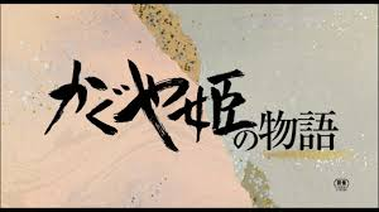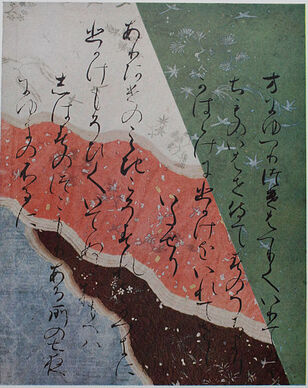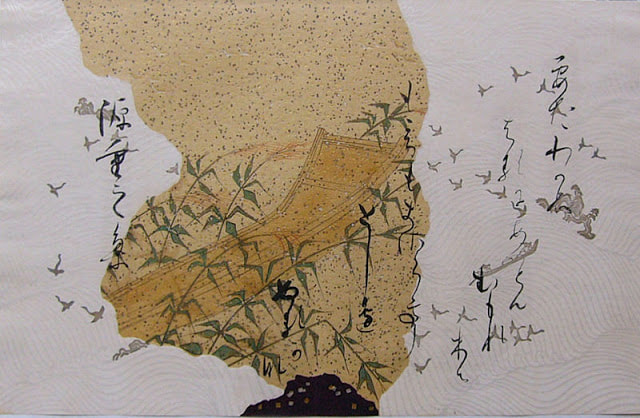 The film The Tale of the Princess Kaguya begins, in the manner of older western movies, and as many studio Ghibli movies do with the credits of filmmakers and cast over a unique background. However, for this film the animators noticed a chance to place the movie in a specific historical context and display the credits over a sheet of woodblock printed paper (See the image on the left). This kind of decorated paper was often used during the Heian period (784-1183 CE) for anthologies of poetry which had been beautifully rendered in calligraphy. This technique, called Chigiri-e involves handmade paper which is torn and aligned on other paper and additionally decorated with flecks of metallic dust or colored pigment. After completion, a calligrapher could write poetry over it, creating a beautiful, almost rustic look. As the textbook Art Beyond the West states:
two pages of the collected poems of Minamoto no Shigeyuki (?-ACE 1000), Artist Unknown
0 Comments
Your comment will be posted after it is approved.
Leave a Reply. |
AuthorEach of the Silverfists take turns sharing their thoughts about illustration found in graphic novels, games, album art, and more... Archives
October 2023
Categories |



 RSS Feed
RSS Feed